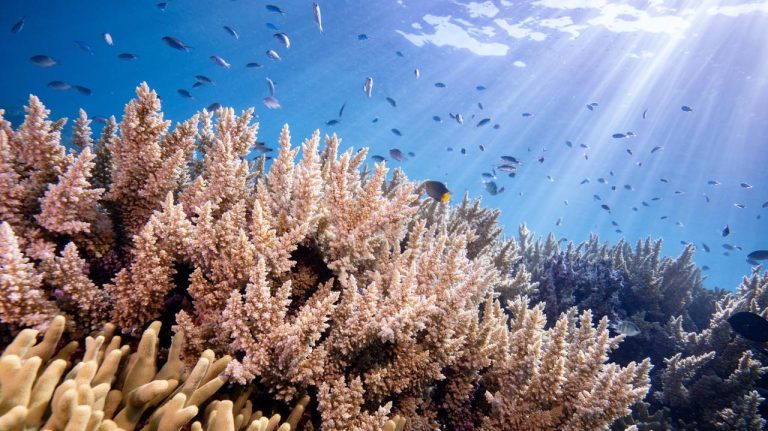Researchers from the National Geographic Society's Pristine Seas Expedition say the world's largest coral reef has been found off the coast of the Solomon Islands in the Pacific Ocean. According to the discoverers, it is at least 300 years old and in good condition.
The “mega coral,” as it's been dubbed, was found off the coast of the Solomon Islands in October by members of the National Geographic Society's Pristine Seas Expedition. This area belongs to an area called the coral triangle, where there are many types of corals.
From the surface of the water, the newly discovered coral looked like a sunken ship, they describe. After taking underwater measurements, they discovered that the coral was larger than the blue whale, the largest animal on Earth. Its size: 34 meters wide, 32 meters long and 5.5 meters high.
The newly discovered coral belongs to a type of hard coral called Pavona clavus because of its arms-like spines. It is a community of many small interrelated organisms that together form a colony. Its dimensions indicate that it is at least 300 years old. According to the researchers, it is in good condition, possibly in deeper water than other coral reefs, which may protect it from the effects of climate change.
“This is a special place and should be protected.”
At the climate summit COP29, which is ongoing in Azerbaijan, Trevor Manemahaga, the climate minister of the Solomon Islands, emphasized that his country is proud of this discovery.
“We want the world to know that this is a unique place and should be protected,” he said. He added that the Solomon Islands are economically dependent on marine resources, so coral is very important to them. Manehaga noted that more international support would help the country to create more diversity, which would reduce the number of people working in industries that threaten coral destruction.
Main image source: Shutterstock

